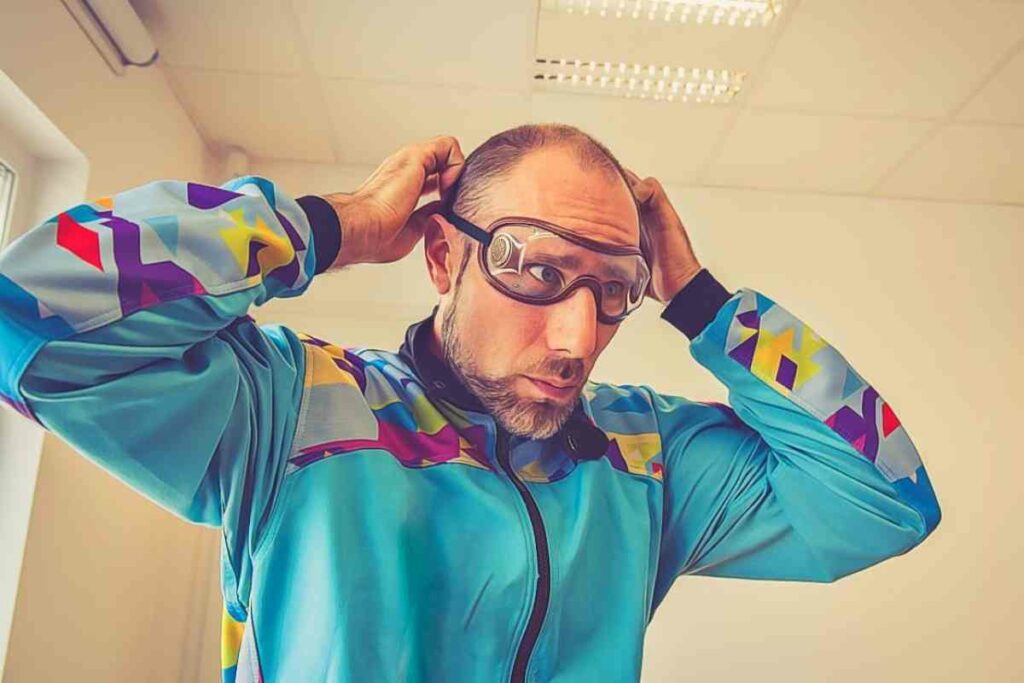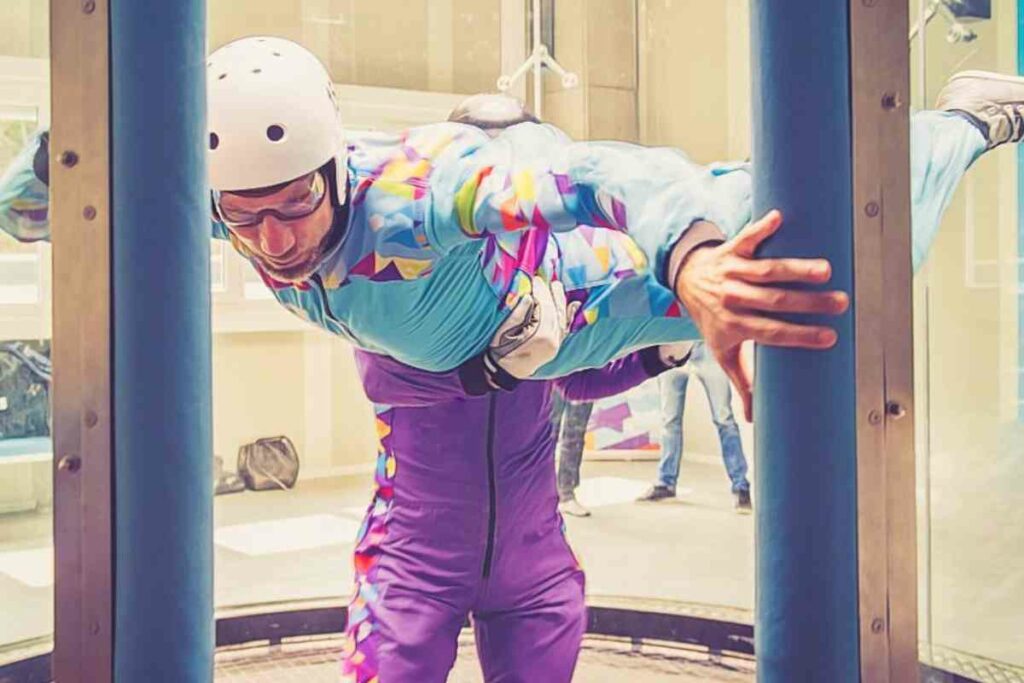Indoor skydiving is a fairly safe activity, but there are still some risks associated. This may lead you to ask, can you do indoor skydiving with back problems?
This is a very good question, and smart to consider! You can indoor skydive with back problems, yes… it may not necessarily be the best idea, however.
If you’ve thrown your back out or experienced dislocation before, then indoor skydiving may not be recommended!
Read before you go – Can You Indoor Skydive If You Have a Medical Condition?
Can You Do Indoor Skydiving With Back Problems?
In order to ascertain whether it’s safe to indoor skydive, you’ll want to be aware of all of the risks involved (not just to your back, but to your whole body):
- First, we’ll talk about dislocations, since they’re perhaps the most serious injury that you can experience when indoor skydiving. Dislocations aren’t super common, but they do happen, especially to folks who have experienced dislocations before. Those who experienced these dislocations often said they didn’t realize just how much of a risk it was, so it’s very good to remember. The most common dislocation is a shoulder dislocation, as the wind is blowing your arms back the whole time, and you may be pulled when you grab onto the exit bar!
- Next, we have bumps. Fortunately, back issues don’t make these any more likely. But, you probably want to avoid bumping your back, because this is a real risk. While they’re not especially common, bumps do happen while indoor skydiving, occasionally. There’s a helmet provided for your head, but if you do opt to indoor skydive with back problems, you’ll want to really guard your back!
- Of course, where there are bumps, there are bruises. Particularly bad bumps may bruise. You’re most likely to get these on your arms, legs, or face. Your head will be protected by a helmet, and your knees and elbows will have pads. So never fear!
- Pregnant folks aren’t allowed to indoor skydive, as it can cause complications for both the mother and the baby. This includes placenta abruption, which involves the placenta detaching from the uterus prematurely. Like all activity, it can also potentially induce premature labor! So, pregnant folks will, unfortunately, need to wait until roughly 6 weeks after they’ve had the baby. Then there will be no pregnancy-associated risk!
- Perhaps the rarest occurrence when it comes to indoor skydiving is a head or neck injury. This can occur if you hit the wall too hard, head-first. But, this is very unlikely, especially with the instruction you’ll receive beforehand, and your sturdy helmet. Head and neck injuries have happened before, however, so it’s good to know!
Talk To Your Doctor
One option, if you’re not sure if you should indoor skydiving with back problems or not, is to talk to your doctor.
You can even go to a back specialist and have them take a look. Is your back healed enough to withstand the powerful wind tunnel, or not? You may receive a more certain answer from your doctor!
Seeking more information? Explore the realm of indoor skydiving with our beginner-friendly guide, designed to introduce you to this exciting activity.
Try a Brace or Physical Therapy
If you really want to skydive despite your back issues, you could always try a back brace.
As long as it’s flexible, allows you to maneuver, and doesn’t interfere with the flight suit, it’s an option.
You could also give physical therapy a try, both for indoor skydiving purposes and life in general!
Final Words
So… can you do indoor skydiving with back problems? It’s not particularly advised, but it’s also up to you.
You’re not guaranteed to experience injury, it’s just a real possibility. You can also discuss it with your doctor, and they may have a more certain answer.
A brace and/or physical therapy may additionally prove quite helpful. Best of luck!







